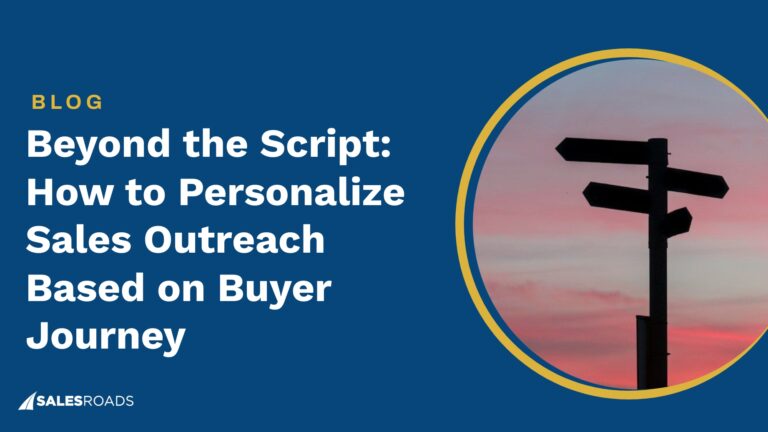Sales qualified leads are the lifeblood of any business. Generating these prospects requires targeted strategies and a thorough qualification process.
What is a Sales Qualified Lead?
The definition of a sales qualified lead (SQL) can vary depending on the company, but generally refers to prospects who have the highest potential of becoming customers with the least amount of time and effort. These prospects have reached the end of the buyer’s journey, understand their problems, and are ready to buy.
SQLs are identified through lead qualification, usually implemented by sales development representatives (SDRs). This process entails comparing prospects to the company’s ideal customer profile and buyer personas. Those who fit the profile are moved along to the next stage of the buyer’s journey.
Aside from SQLs, leads can be classified as:
- Information Qualified Leads (IQLs): Refer to prospects who shared their contact information in exchange for gated content or incentives. They’re at the early stages of the buyer’s journey, looking for solutions to their problems. These leads usually require more nurturing to move to the next stage, so they often get less follow-up priority.
- Marketing Qualified Leads (MQLs): The equivalent of warm leads, these prospects are in the decision stage. They’re aware of their problems and possible solutions and are considering different options. This is where offering consultations, trials, and demos are most effective.
Best Strategies for Generating Sales Qualified Leads
Most lead qualification processes provide a broad pool of prospects, making SQL identification time-consuming and labor-intensive.
These targeted strategies are bound to generate SQLs:
- Appointment setting
- Search engine optimization
- Targeted social media campaigns
- Leverage lead magnets
- Add lead capture forms to your website
Appointment Setting
Appointment setting is a strategy that fills the pipeline with qualified leads. It is typically implemented by SDRs, whose primary responsibility is to conduct lead qualification.
A common tactic for appointment setting is cold calling, which entails calling prospects without previous knowledge or interaction with your brand. This practice can provoke a wide range of responses, which is why it’s crucial for SDRs to train methods for overcoming rejections.
Appointment setting programs can greatly improve the lead quality in your pipeline, as it identifies the ones with better potential for conversion. It can also speed up the sales cycle and increase brand awareness.
Tip:
Building an in-house appointment setting program is not feasible for all companies, as it requires an additional workforce, expertise, and considerable capital. If this is your case, outsourcing this service can be a great solution.
Outsourcing an appointment setting program entails delegating specific tasks or the entire process to a third-party agency. This allows you to enjoy the benefits of appointment setting without having to face too many risks.
Choosing the right provider is the key to successfully outsourcing your appointment setting program. In this video, you’ll learn must-ask questions to make when choosing a reliable appointment setting partner:
Account Based Marketing (ABM)
ABM tactics focus on attracting the attention of specific companies or individual decision-makers. This involves curating personalized content and engagement according to an account’s specific preferences and needs.
These are the steps on how to generate sales qualified leads using ABM:
Step #1: Clearly Define Your Ideal Customer Profile (ICP) and Buyer Persona
The key to successfully executing an ABM strategy is creating a highly qualified lead list. This is typically compiled through in-house prospecting, but companies that are short in time can purchase sales qualified leads from third parties. The average cost per lead (CPL) is $198, but highly qualified leads can cost more1.
Your lead list will help determine what are the best tactics to use and what content resonates the most with your prospects.
Step #2: Outline Strategies for Specific Accounts
Once you have identified your target accounts, it will be easy to outline tactics and content to attract their attention. Outline all the necessary actions for each account to make it simple for the AEs to execute and manage.
Step #3: Assign Individual Accounts to AEs
Assign accounts to AEs with experience and in-depth knowledge about the prospect’s industry. This strategy will make your business more likely to provide a tailored experience, as the assigned AEs will have a good understanding of the client’s pain points and needs.
Tip:
AEs can work on multiple accounts at once, but overloading them might affect the quality of engagement with each account.
Search Engine Optimization (SEO)
SEO entails improving your website to increase visibility, making it easy for prospects to discover your brand and offerings.
A well-implemented SEO strategy will make it easy for SQLs to discover your offerings, since 68% of online experiences start with search engines2. It also allows you to highlight your benefits and stand out from the competition.
The common subsets of SEO are:
- On-page SEO: Refers to techniques that increase website visibility in search engine results and attract more organic traffic. This includes improving your website’s code, publishing quality content, and adding meta descriptions and page titles.
- Off-page SEO: Focuses on building domain authority and website visibility externally. This includes guest posting, link building, and local listing.
- Local SEO: Optimizes your website based on local search results. The keywords “where to buy” + “near me” have doubled since 2019, making local SEO more important than ever3. It allows your business to increase visibility to customers around a specific area.
- Mobile SEO: 70% of web users browse the internet through mobile devices4. This subset aims to optimize websites to provide a positive experience for all users.
Tip:
Conduct a period SEO audit on your website to identify which areas need improvement.
Targeted Social Media Campaigns
Social media platforms such as LinkedIn, Facebook, Instagram, and Twitter have features to target specific demographics. Using these channels allows you to increase your reach and connect with more sales qualified leads.
Here are some ways you can attract SQL using social media:
- Publish content: You can increase traffic to your website by sharing relevant and informative content.
- Use ads: You can capture the attention of SQLs by running creative campaigns that resonate with their needs and pain points.
- Integrate opt-in forms: Integrating forms into your business pages or posts makes it easy for prospects to enter your funnel. This also allows you to collect data, which is crucial for identifying SQL.
Tip:
Find on which social networking your potential consumers are most active. For example, if you plan to attract the attention of business decision-makers, using LinkedIn is probably the best option.
Leverage Lead Magnets
Lead magnets, also known as gated content, are information web visitors can only access after providing contact details. This content allows you to build an organic lead list and increase brand awareness.
A high-quality lead magnet speaks directly to your audience. The content must address the visitors’ most pressing concerns while providing perceived value. This will compel visitors to share contact information in exchange for access. Examples of lead magnets include:
- Whitepapers
- Ebooks
- Templates
- Webinars
- Case studies
- Training videos
- Free trials and samples
Tip:
Make sure to thoroughly understand your target audience’s needs and pain points to come up with hard-hitting lead magnets.
Add Lead Capture Forms to Your Website
Lead capture forms make it easy for prospects to connect with your sales team. Adding lead qualification to these forms allows you to categorize prospects and automatically discover high-value leads.
Common types of lead capture forms are:
- Sign up forms
- Contact forms
- Registration forms
- Newsletter sign ups
Effective lead capture is straightforward and visually appealing. Make it as simple as possible while remaining consistent with your website’s design.
Tip:
Adding personalization can make lead capture forms more effective. Some tools generate forms based on the visitors’ behaviors while browsing your website.
Bottom Line
Sales qualified leads have the highest chance of conversion, which puts them at the top of the list for nurturing and follow-ups. Identifying these leads entails using targeted strategies designed to attract their attention.
Resources
- https://www.marketingcharts.com/customer-centric/lead-generation-and-management-79707
- https://videos.brightedge.com/research-report/BrightEdge_ChannelReport2019_FINAL.pdf
- https://storage.googleapis.com/think/docs/think-with-google-2019-research-review.pdf
- https://www.blog.google/products/marketingplatform/analytics/mobile-challenge-and-how-measure-it/










